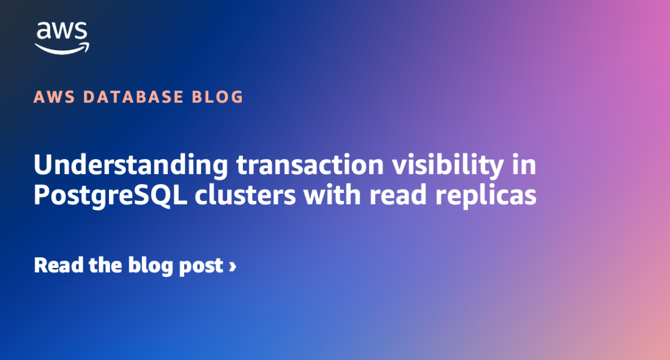Amazon
1M
134

Image Credit: Amazon
Understanding transaction visibility in PostgreSQL clusters with read replicas
- The article discusses transaction visibility behavior in PostgreSQL clusters with read replicas, as highlighted in a Jepsen report on Amazon RDS for PostgreSQL Multi-AZ clusters.
- The issue of transactions becoming visible in a different order in primary and replica clusters is a known long-standing problem in the PostgreSQL community.
- This behavior, known as the Long Fork anomaly, is a violation of Snapshot Isolation and has been acknowledged since at least 2013.
- The Long Fork anomaly affects the order in which transaction effects become visible in PostgreSQL, leading to potential discrepancies in application behavior.
- The article provides an example scenario to illustrate how the Long Fork anomaly can impact the visibility of transaction effects in PostgreSQL clusters with read replicas.
- Various solutions have been proposed to align the visibility order with the commit order by using Commit Sequence Numbers (CSNs) in PostgreSQL.
- Although the Long Fork anomaly is esoteric from an end-user perspective, fixing it is crucial for enhancing enterprise-grade capabilities in PostgreSQL clusters.
- The article emphasizes the importance of addressing the Long Fork anomaly, particularly in scenarios related to distributed systems, query routing, data synchronization, and point-in-time restore.
- AWS is dedicated to PostgreSQL's success, actively contributing to the PostgreSQL community and working towards resolving the Snapshot Isolation anomaly in PostgreSQL.
- Recommendations for users include reviewing application assumptions, using explicit synchronization mechanisms, and contacting AWS Support for deployment concerns.
Read Full Article
8 Likes
For uninterrupted reading, download the app